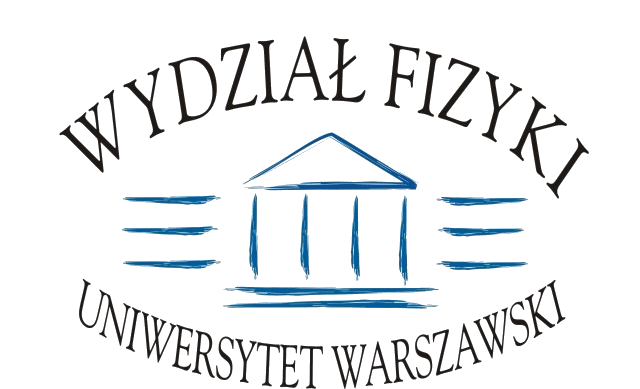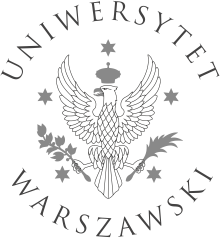Seminarium "Teoria cząstek elementarnych i kosmologia"
2017/2018 | 2018/2019 | 2019/2020 | 2020/2021 | 2021/2022 | 2022/2023 | 2023/2024 | 2024/2025 | 2025/2026
2024-11-28 (Czwartek)
Pedro Schwaller (University of Mainz)
Gravitational wave probes of dark sectors
Gravitational waves offer a new window into the early and dark universe. I will review sources of gravitational waves that can be searched for with current and future GW experiments, discuss interpretations of the recent observation of a stochastic GW background with PTAs, and explore new ideas for GW searches at utra-high frequencies using microwave cavities.
Click here to enter the meeting
Click here to enter the meeting
2024-11-21 (Czwartek)
Kai Schmitz (Münster U.)
Gravitational waves from low-scale cosmic strings
(on-line)
Cosmic strings are a common prediction in many grand unified theories and a promising source of stochastic gravitational waves (GWs) from the early Universe. If strings are produced at a comparatively low energy scale, v ≲ 10^9 GeV, their GW signal exhibits, as I will discuss in this talk, several novel features that are not present in the case of high-scale cosmic strings, including: (i) a sharp cutoff frequency f_cut in the GW spectrum from the fundamental oscillation mode on closed string loops and (ii) an oscillating pattern in the total GW spectrum from all oscillation modes whose local minima are located at integer multiples of f_cut. I will explain the physical origin of these features and illustrate how they can be leveraged to directly probe the discrete spectrum of oscillation modes on closed string loops with future GW observatories such as BBO and DECIGO.
Click here to enter the meeting
Click here to enter the meeting
2024-11-14 (Czwartek)
Anish Ghoshal (IFT UW)
Cancelled
2024-11-07 (Czwartek)
Michał Ryczkowski (IFT UW & Padua U.)
Theoretical constraints on models with vector-like fermions
In this talk, based on our recent work (Phys. Rev. D 110 (2024) 7, 075029, [2406.16050]), we explore theoretical constraints on models in which the Standard Model field content is extended by vector-like fermions and, in some cases, a real scalar singlet. Our approach focuses on the requirements of electroweak vacuum stability, perturbativity of model couplings, and gauge coupling unification, utilizing renormalization group equations. We show that a careful analysis of these factors leads to stringent constraints on the parameter space of the considered models. This, in turn, has significant implications for phenomenology, as we illustrate through examples of the double Higgs boson production, electroweak precision observables, and the electroweak phase transition.
2024-10-31 (Czwartek)
André Sopczak (IEAP CTU in Prague)
ATLAS forward proton detectors: status, performance and physics results
A key focus of the physics program at the LHC is the study of head-on proton-proton collisions. However, an important class of physics can be studied for cases where the protons narrowly miss one another and remain intact. In such cases, the electromagnetic fields surrounding the protons can interact producing high-energy photon-photon collisions. Alternatively, interactions mediated by the strong force can also result in intact forward scattered protons, providing probes of quantum chromodynamics (QCD). In order to aid identification and provide unique information about these rare interactions, instrumentation to detect and measure protons scattered through very small angles is installed in the beam pipe far downstream of the interaction point. We describe the ATLAS Forward Proton “Roman Pot” detectors (AFP and ALFA), their performance of Tracking and Time-of-Flight detectors. Results from ATLAS and AFP/ALFA photoproduction in proton-proton and heavy ion collisions are reviewed.
2024-10-24 (Czwartek)
Kazuki Sakurai (IFT UW)
Testing Quantum Mechanics at Colliders
Recently, there has been a lot of attention and studies on treating high-energy colliders as natural quantum processors. Along these lines, we propose a novel test of quantum mechanics which goes beyond the Bell-inequality test. Our proposal is based on the Quantum Process Tomography, i.e. an experimental reconstruction of the entire quantum channel. We demonstrate such a test can be implemented with the e+ e- > t tbar process at lepton colliders with multiple runs of different beam polarisation settings. We also discuss the possibilities of Quantum Process Tomography with different collider processes.
2024-10-17 (Czwartek)
Indra Kumar Banerjee (Indian Institute of Science Education and Research, Brahmapur)
Spinning Primordial Black Holes from First Order Phase Transitions
In this talk I explain a novel study we conduct to obtain the initial spin of the primordial black holes created during a first-order phase transition due to delayed false vacuum decay. Remaining within the parameter space consistent with observational bounds, we express the abundance and the initial spin of the primordial black holes as functions of the phase transition parameters. The abundance of the primordial black holes is extremely sensitive to the phase transition parameters. We also find that the initial spin weakly depends on all parameters except the transition temperature.
2024-10-10 (Czwartek)
Cancelled
2024-10-03 (Czwartek)
Krzysztof Jodłowski (IBS Daejeon, South Korea)
Can electric dipole moment experiments distinguish sources of BSM CP violation?
In the SM, CP violation (CPV) is insufficient for baryogenesis and near-term future measurements of electric dipole moments (EDMs). We examine whether chromo-electric dipole moments (CEDMs) of gluons and light quarks can be distinguished from the QCD θ-term using EDMs of nucleons and diamagnetic nuclei. We analyze scenarios with and without the Peccei-Quinn (PQ) mechanism explaining the strong CP problem. Without PQ, nucleon EDMs show distinctive patterns when induced by light quark CEDMs. With PQ, nucleon EDMs are similar regardless of the source, but some diamagnetic nuclei EDMs may reveal characteristic patterns depending on the dominant source. On the other hand, distinguishing gluon CEDM from θ-term requires additional knowledge of low energy hadronic parameters, which limit the analysis at present. Our results suggest that EDMs may reveal unambiguous sign of BSM CPV possibly also identifying the origin of the axion vacuum expectation value.
Stron 3 z 3






